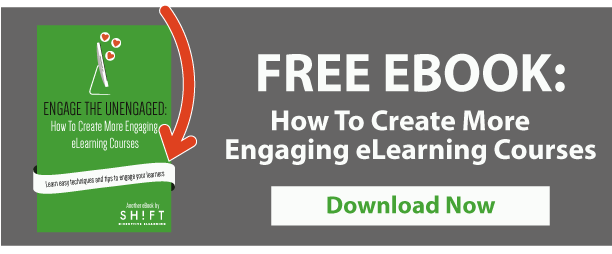We’ve all met them. Ask about online courses they’ve taken, and they’ll roll their eyes. Current eLearners are bored and can’t wait for their courses to end. Whoever put together these courses – was it you? – didn’t have the right recipe for eLearner engagement.
In the past, most professionals who designed, taught or coordinated eLearning courses needed to understand how learning occurs and a bit about brain-based learning tips resulting from neuroscience research. That’s no longer enough. You need to know the key ingredients required to effectively engage eLearners by engaging their brains.
For a good result, you need at least four basic ingredients. And as is the case with any recipe, if you leave out even one, you won’t get the expected outcome of learner engagement. Success is linked to how these steps intertwine and blend. Since successful learning is brain-based learning in which an eLearner’s brain is involved in everything you do in a course, you’ll need these four ingredients:
Step 1: Start with Motivation
Your basic premise is that all learning depends on motivation. No matter what we as professionals do, we can’t get eLearners to commit new data or information to their memories unless we motivate them first. Intrinsic learning, when they have a chance to learn by the natural process of learning, is particularly important in making sure they’re both eager and successful.
In designing, teaching or facilitating an online course, remember that learning is really hard work for humans. The more motivated an eLearner is, the more successful he or she will be at eLearning courses. Also keep in mind that emotion drives motivation.
How do you get learners to have an emotional stake in the learning process? By:
- Activating their curiosity
- Engaging positive feelings linked to past success
- Creating an expectation on fun from learning a topic
Individuals who aren’t motivated learners are the ones who have trouble completing assignments and tests. Once content becomes difficult, it takes motivation to keep learners focused and exerting the necessary effort to learn.
Intrinsic motivation, which is present in the human brain, is the kind that propels a learner to complete an activity for self-satisfaction versus some external reward. When you design an eLearning course, you must create a model favorable to intrinsic motivation.
Step 2: Activate Prior Knowledge…
The underlying assumption is that for learning to occur, new information must link to earlier knowledge. Your role is to help learners make a connection between the two. Why?
- Effective learning has prior knowledge as a base.
- It’s easier to learn new information when you can link it to information already mastered.
- Association and sensory experiences are very important to the brain.
Think of an eLearning course as a cache of opportunities for learners to find and activate prior knowledge to better understand new ideas and principles. When new information arrives, their brains constantly compare it to what they already know. The brain connects new information to prior knowledge to aid the understanding of a new piece as well as to develop a clearer idea about broader concepts.
"Long lists of words or content dumps that don't have personal relevance or don't resonate with a topic about which the student has been engaged are likely to be blocked by the brain's affective (or emotional) filters," states neurologist Judy Willis. You need to activate earlier knowledge by using patterns like analogies, metaphors and similes. Here are other handful of instructional strategies designed to stimulate recall of prior knowledge. Always make sure there is a connection between the new information and the old, so that all new knowledge has a clear and solid basis.
Step 3: Encourage Reflection
Reflecting on what you just learned is an excellent way to insert the new information into long-term memory. Learners become engaged when they can pause, process and reflect on their learning. This flow prevents flooding the brain with too much information.Learners need time to reflect and practice to move information into their long-term memory and practice critical thinking. Repetition, reinforcement and reflection are all important in linking learning and memory.
To foster reflection, make sure your eLearning courses include:
- Time and space
- A supportive curriculum or environment
- An emotionally supportive atmosphere
- Challenges that promote thinking about information
- Tasks that require ordering of thoughts
- Tasks requiring evaluation
- Work that involves integrating new learning into what was previously learned
Discussion time at the end of a lesson, group discussions, journaling and opportunities for questions all promote reflection.
Step 4: Include Real, Personal Context
Most eLearning courses are sadly deficient in this. Every learner needs to understand how information relates to his or her personal life. Your goal is helping them transfer new information to what happens in the real world.
Immediate impressions based on context frame a learner’s attitude toward your course and how learning proceeds. It will either be interesting or boring. When you provide authentic and relevant context, learners will be able to relate to and have an interest in the information because content seems more meaningful. This also helps the individual transfer applicability of the information to real life.
Good context helps learners feel engaged. When planning authentic context, consider:
- Knowledge, skills and attitudes learners should have after the course
- Where and how they would apply knowledge gained to their lives
- Which context options are appropriate in eLearning to enable your students to learn

Blend these four ingredients, and your recipe will take a blue ribbon.




